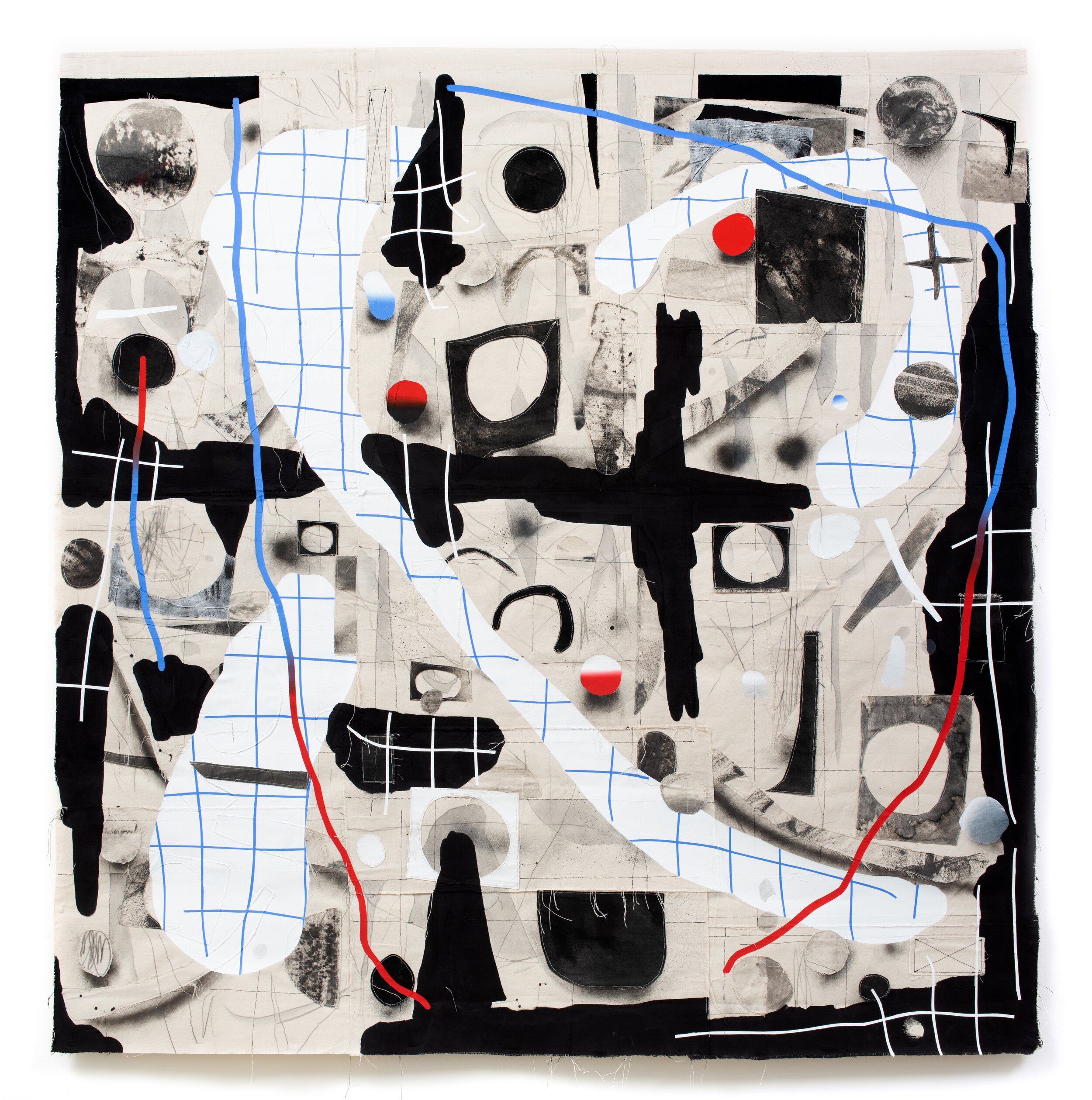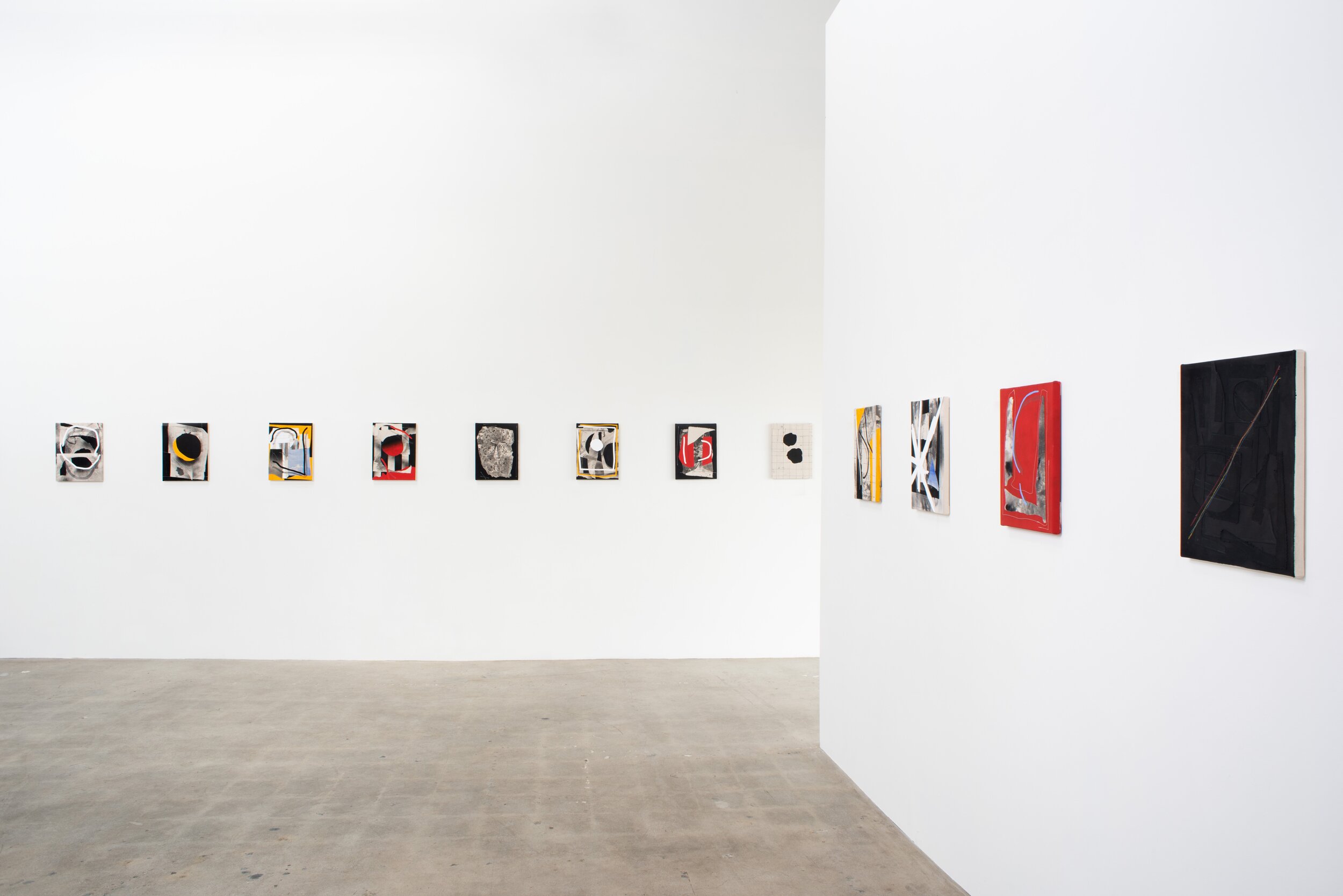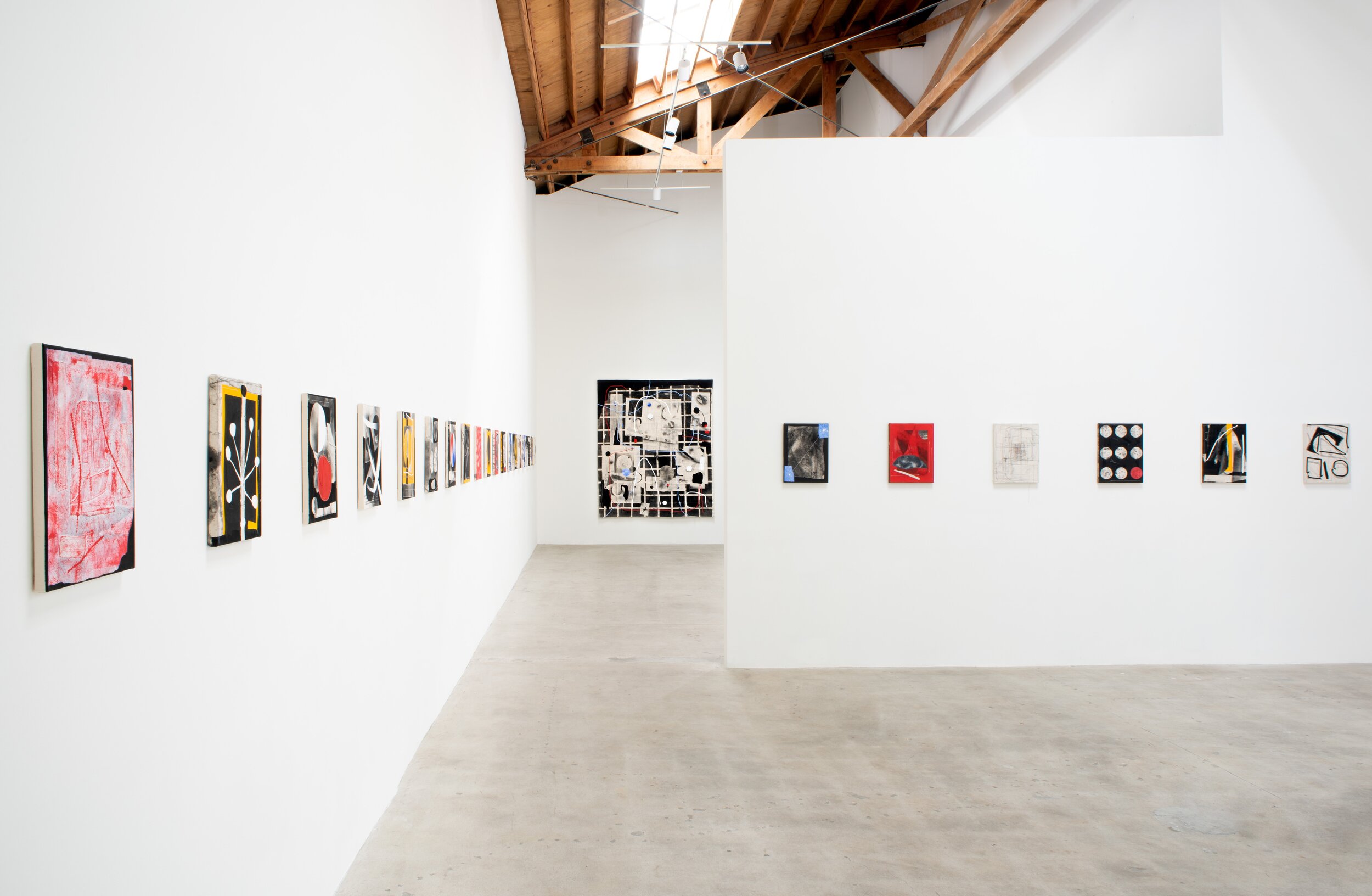Take Me To Mars
press release
Moskowitz Bayse is pleased to present Take Me To Mars, Christopher Iseri’s second solo exhibition with the gallery. The artist presents fifty seven new works on canvas; fifty four are the same scale –16 x 12 x 1 inches–and hang equidistant from one another, tracing the architecture of both galleries. Three larger works create a scalar interruption from this otherwise continuous line, and function as dramatic events or portals to another dimension as well as outlets for his continuously evolving visual language.
Christopher Iseri’s practice engages modes of structure, association, and experimentation to make work that uses the familiar to arrive at the unfamiliar; objects occupy space between depiction and abstraction. Over the last four years, the artist has transitioned from working with layered tracing paper and ink to sewn canvas and flashe, developing a distinct set of visual variables with these materials from which he mines his compositions. Palette is restrained to black, white, and primary color, while variation of line and gesture are repeated across works. The artist considers these parameters rigid until the material itself takes hold; canvas is often cut, layered, collaged, and sewn back into place. Stray thread, frayed edges, and marks made in the past contrast with crisp lines, precise drop shadows, and flat swathes of vibrant color, shuttling the viewer into an orbiting cycle of permuted spaces, all sharing a common visual lexicon.
Deliberately avoiding characterization as either biomorphic or strictly geometric, Iseri’s drawn, painted, and cut shapes instead reference autonomist strategies, as well as hastily rendered doodles and sketches. Mutating as if by mitosis, shapes come to approximate collapsed digital space while also alluding to celestial phenomena. Grids are knocked from their axes and remain visible even as they warp, relieved of structural authority. Mark-making is very much analog but still mediated; for instance, the sewing machine acts as an extension of the artist’s hand, as sewn lines often function as foundational drawing. At the same time, artist and machine must sometimes contend, with the latter occasionally acting unexpectedly, in turn forcing Iseri to respond to its irregularities.
For Iseri, language and mark-making have a reflexive relationship; idea and intuition volley back and forth as they inform one another in his fluid workflow. This, together with language, nature, and imagination creates a duality in each work between micro and macrocosms, distinguishing the artist’s use of an abstract vocabulary. Remaining cognate even as it metamorphoses across canvas and painted time, Iseri’s planar vocabulary hints at painting’s most elemental, communicative aspirations for artist and viewer alike. Exploiting the intuitive similarities between written and painted language, Iseri’s work steadily builds upon itself - a living exchange between artist, object, and viewer in which information flows freely and immediately.
























